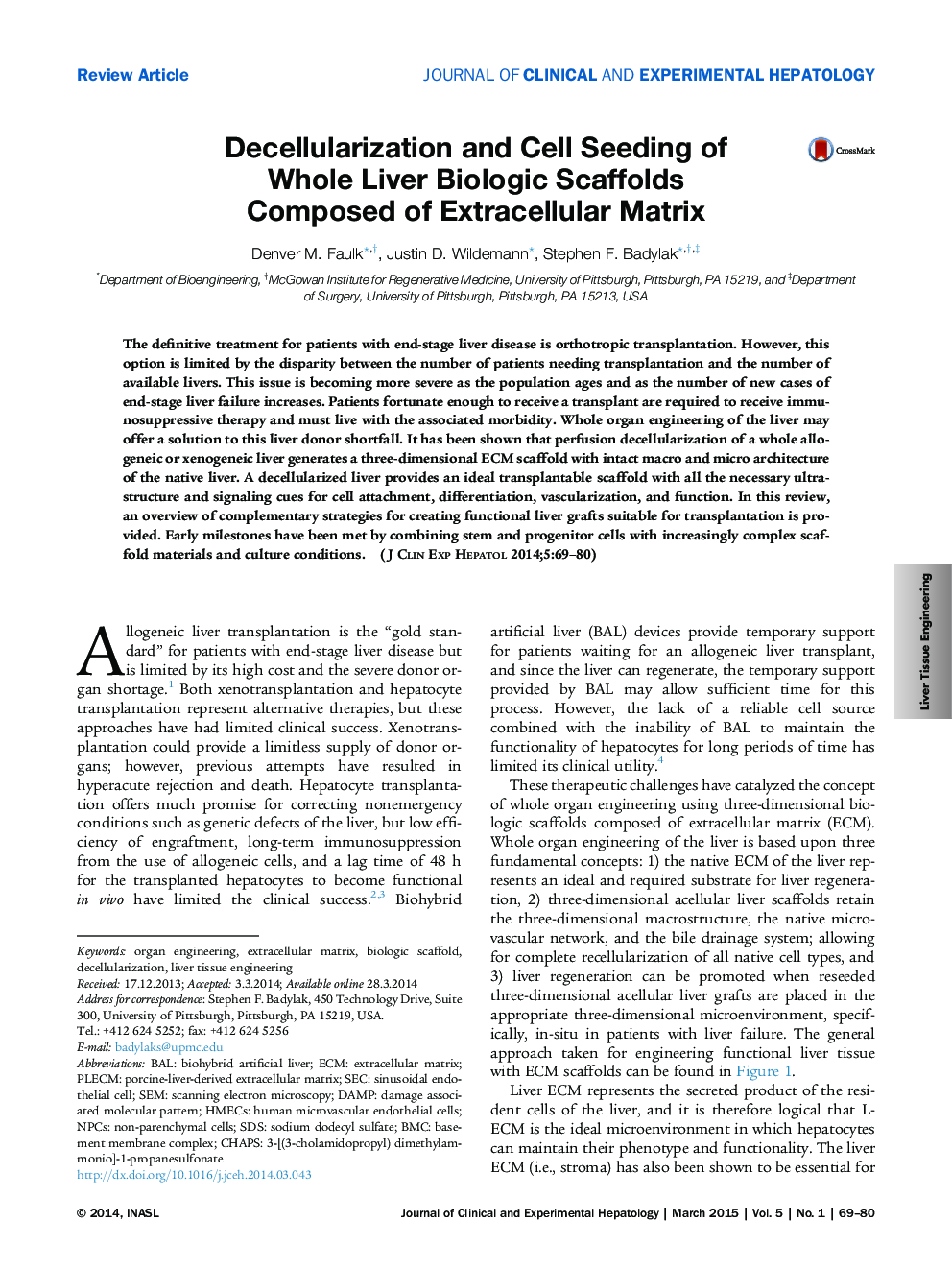| Article ID | Journal | Published Year | Pages | File Type |
|---|---|---|---|---|
| 3339150 | Journal of Clinical and Experimental Hepatology | 2015 | 12 Pages |
The definitive treatment for patients with end-stage liver disease is orthotropic transplantation. However, this option is limited by the disparity between the number of patients needing transplantation and the number of available livers. This issue is becoming more severe as the population ages and as the number of new cases of end-stage liver failure increases. Patients fortunate enough to receive a transplant are required to receive immunosuppressive therapy and must live with the associated morbidity. Whole organ engineering of the liver may offer a solution to this liver donor shortfall. It has been shown that perfusion decellularization of a whole allogeneic or xenogeneic liver generates a three-dimensional ECM scaffold with intact macro and micro architecture of the native liver. A decellularized liver provides an ideal transplantable scaffold with all the necessary ultrastructure and signaling cues for cell attachment, differentiation, vascularization, and function. In this review, an overview of complementary strategies for creating functional liver grafts suitable for transplantation is provided. Early milestones have been met by combining stem and progenitor cells with increasingly complex scaffold materials and culture conditions.
